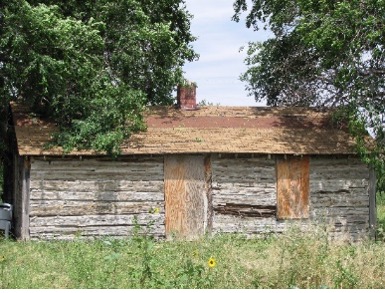Black Elk, or Hehaka Sapa, is the most famous Oglala holy man of the nineteenth century. He was born free in December of 1863, before the breaking of treaties. He was with Crazy Horse and Sitting Bull the day Custer and the 7th Cavalry attacked on the Little Bighorn River. Years later, he rescued survivors at the Wounded Knee Massacre in 1890.
Black Elk traveled the world with Buffalo Bill Cody’s Wild West Show before returning to live the remainder of his life in a small log cabin just south of Manderson, South Dakota, not far from the Singing Horse Trading Post where I have stayed during all thirty of my visits to the Pine Ridge Indian Reservation. I have personally visited that cabin many times as it falls slowly back into the earth.

This post, and my next two, are dedicated to Black Elk. Each contains an excerpt from John Neihardt’s iconic book, Black Elk Speaks, and here is the first:
I am Lakota of the Oglala band. My father’s name was Black Elk, and his father before him bore the name, and the father of his father, so that I am the fourth to bear it.
My father was killed by the Pawnees when I was too little to know, and his mother, Red Eagle Woman, died soon after.
I was born in the Moon of the Popping Trees [December] on the Little Powder River in the Winter When the Four Crows were Killed [1863], and I was three years old when my father’s right leg was broken in the Battle of the Hundred Slain.
I had never seen a Wasichu [white person] then and did not know what one looked like; but everyone was saying that the Wasichus were coming and that there were going to take our country and rub us all out and that we should all have to die fighting.
When I was older I learned what the fighting was about. The Wasichus had found much of the yellow metal [gold] that they worship and that makes them crazy, and they wanted to have a road up through our country to the place where the yellow metal was; but my people did not want the road. It would scare away the bison and make them go away and it would let the other Wasichus come in like a river. They told us that they wanted only to use a little land, as much as a wagon would take between the wheels; but our people knew better. And when you look about you now, you can see what it was they wanted.
Once we were happy in our own country and we were seldom hungry, for then the two-leggeds and the four-leggeds lived together like relatives, and there was plenty for them and for us. But the Wasichus came, and they have made little islands for us and other little islands for the four-leggeds, and always these islands are becoming smaller.
Before I started visiting the Pine Ridge Indian Reservation in present-day South Dakota, I thought Columbus had discovered a “New World,” but people already lived here, and Black Elk was one of them.
Today the Pine Ridge Indian Reservation is the poorest place in America.
Winning isn’t winning unless everyone’s winning.